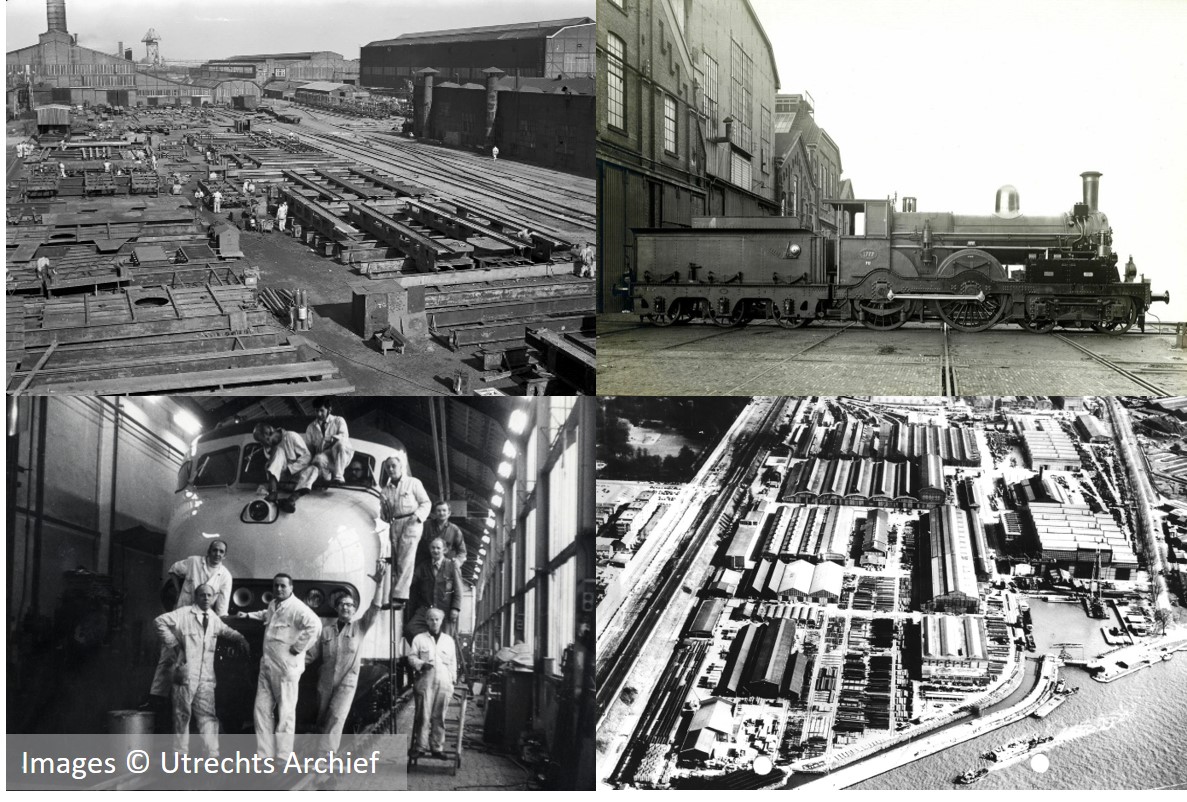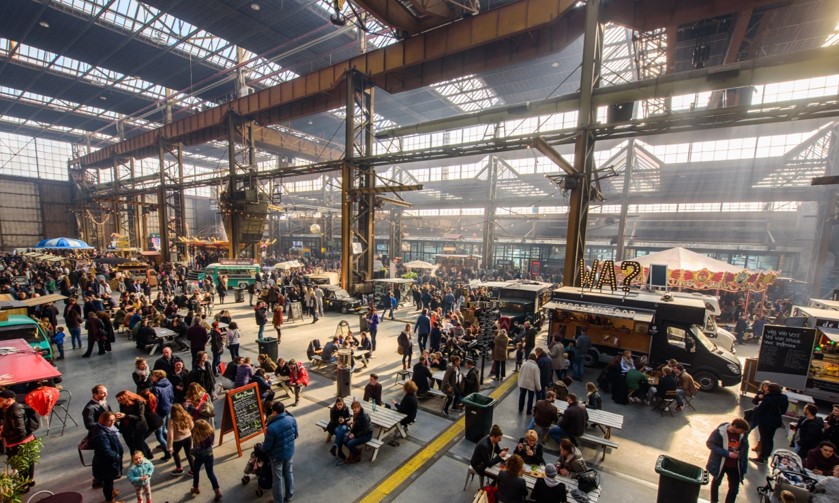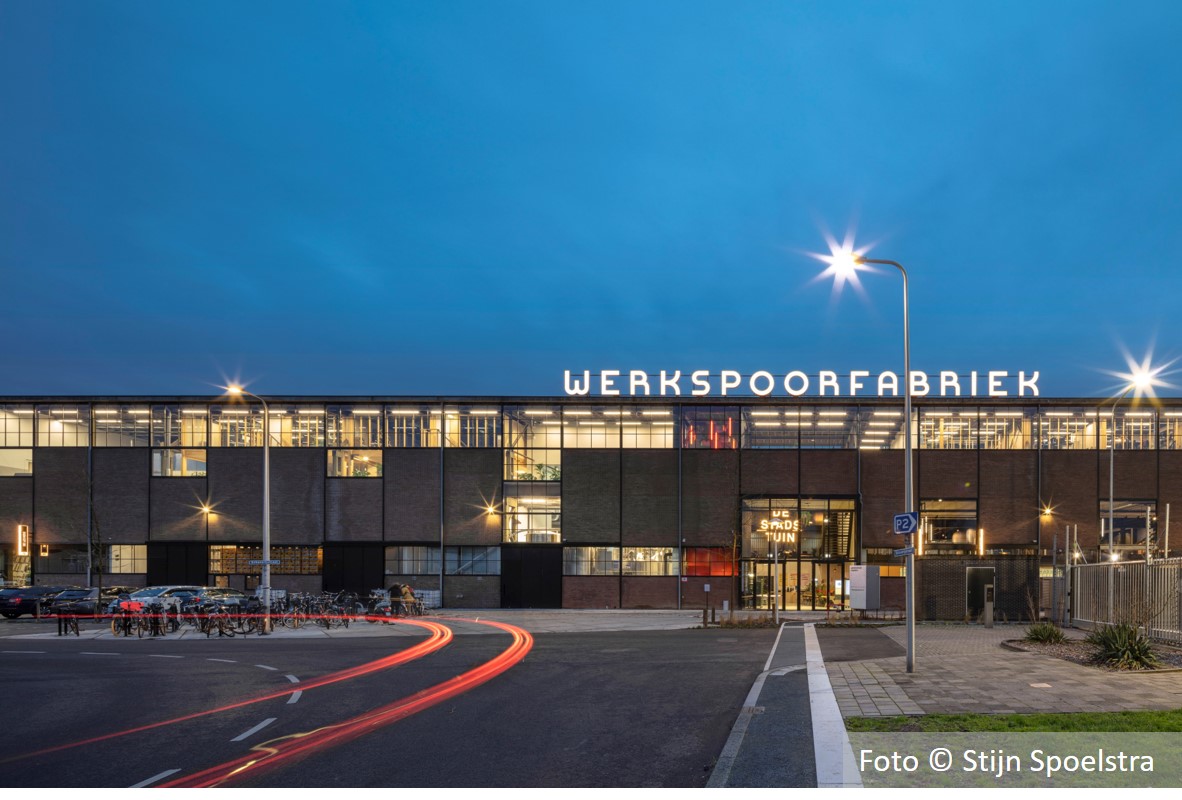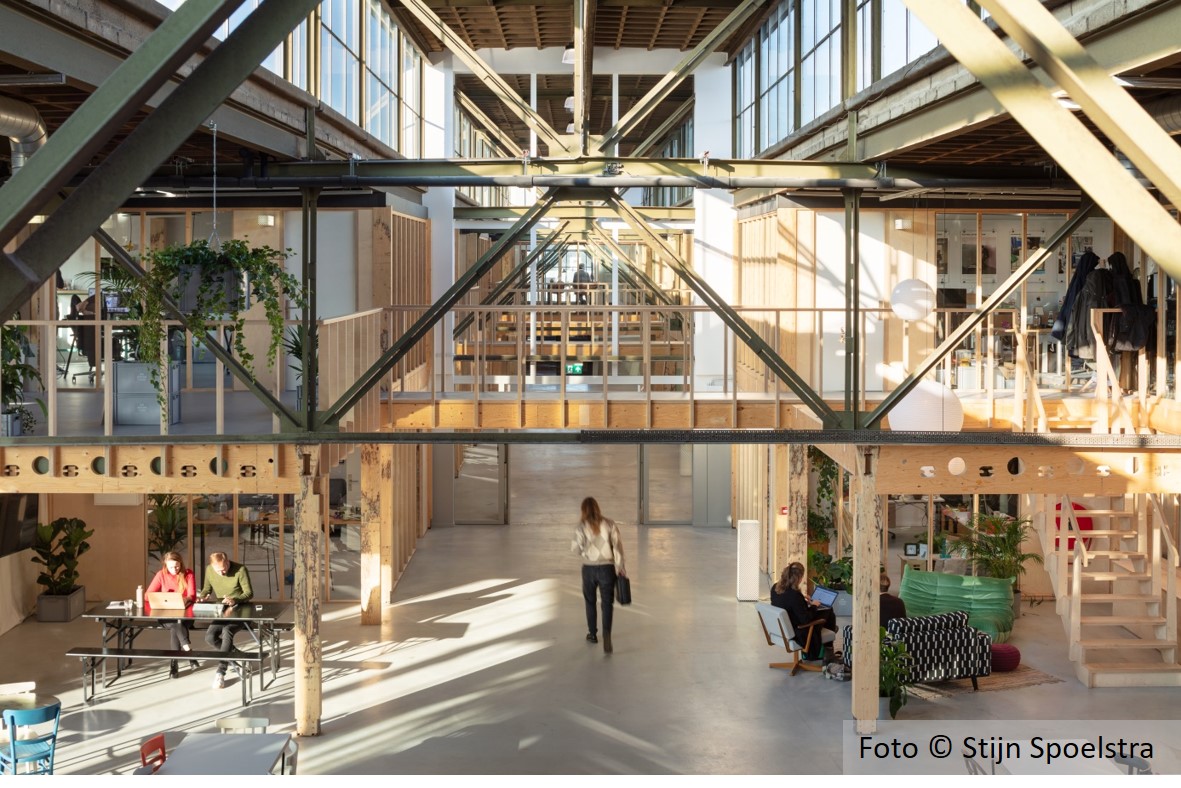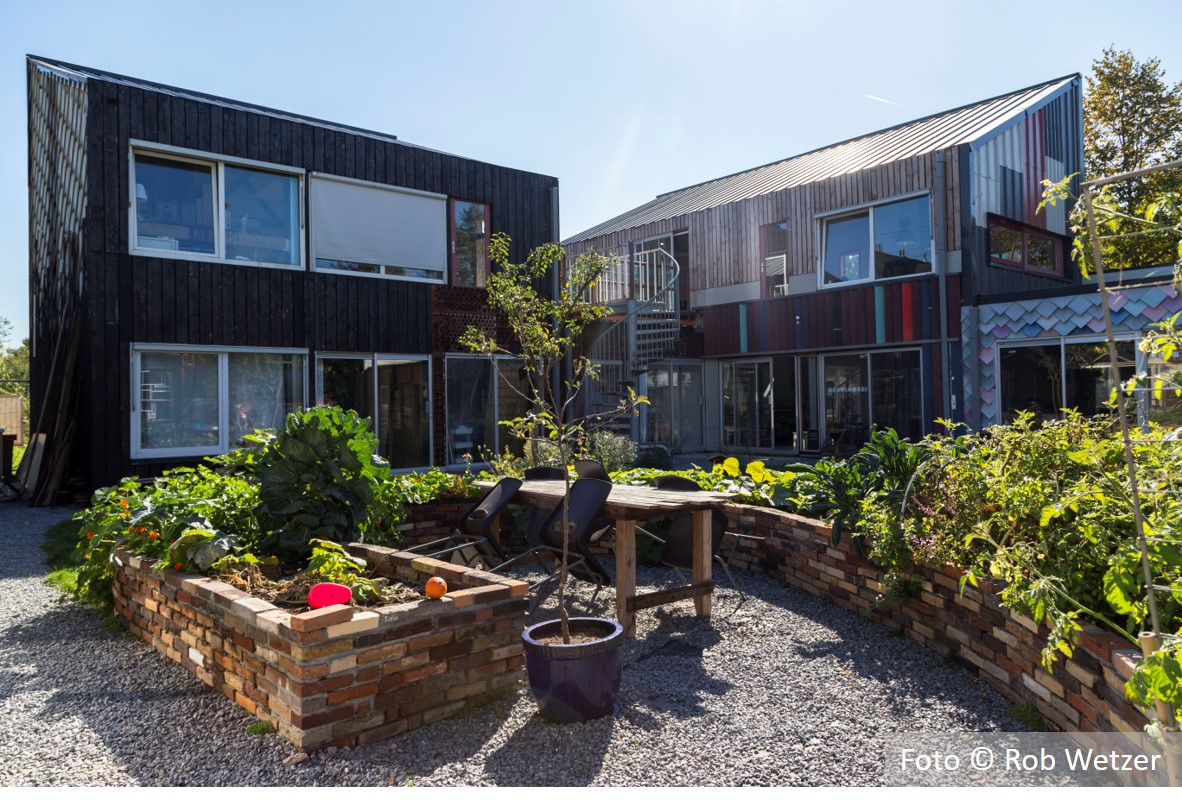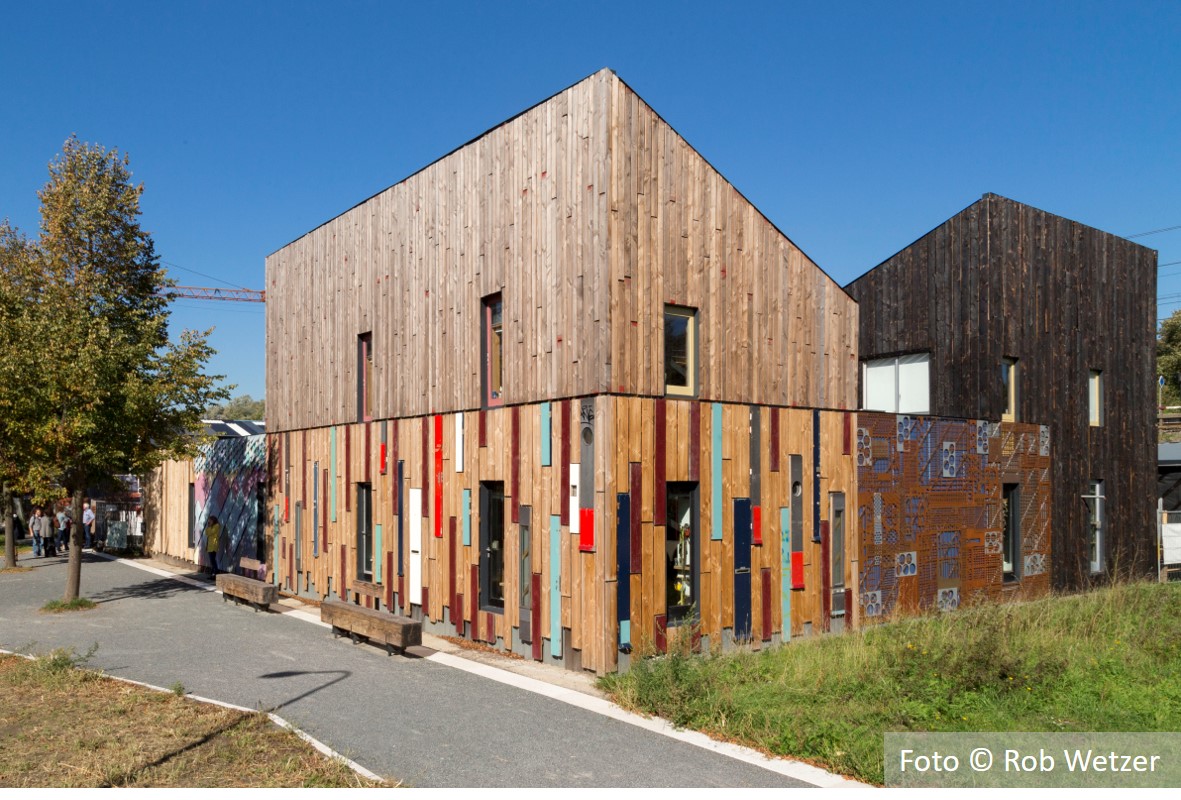Werkspoorkwartier
Basic information
Project Title
Full project title
Category
Project Description
Werkspoorkwartier, a former industrial site, is transformed into a vibrant working area for creative industries, manufacturing and circular business. A joint effort from entrepeneurs in the area, Utrecht universities and circularity specialists. Monumental halls are converted into event and working spaces. Over 300 entrepreneurs in creative / circular manufacturing have found a working place here, transforming the site into one of the leading sustainable business area in the country.
Project Region
EU Programme or fund
Which funds
Other Funds
European Regional Development Fund / Kansen voor West 2 (CCI 2014 NL 16RF OP 002)
Description of the project
Summary
Welcome to the Werkspoorkwartier. A forgotten industrial area in Utrecht, sandwiched between residential areas, along the Amsterdam-Rijn canal. In the 20th century, thousands of people worked here at the steel factory Werkspoor. They forged railway cars, bridges and other steel structures. Ships sailed on and off with iron, wood, coal and other primary raw materials.
The harbour has long since been abandoned. Many large factory halls are still there. After forty years of vacancy, it is the turn to a new generation of makers. They are refurbishing the industrial heritage and building new business locations for young, creative entrepreneurs. Iron and coal are of the past. Reuse is now central, towards a circular economy.
After closing the factory in the eighties of the last century , a large variety of businesses settled in the area. However, the overall quality of the area was low, with deserted buildings and unpleasant streets. In 2017 a project for redevelopment was initiated within the ERDF program.
The project brings together building owners, SMEs from the construction and manufacturing sector, creative entrepreneurs and knowledge institutions. The Utrecht Sustainability Institute coordinates the cooperation. In less than 5 years, the area has been put on the map as a 'creative, circular manufacturing area'. Eyecatching elements are the Hof van Cartesius (100% circular working space), the Werkspoorfabriek (renovation of one of the historic factory halls) and the Havenloods (factory hall renovated for artists / creative entrepreneurs). In the summer of 2019, Buurman Utrecht opened their doors - a circular hub for reselling used building materials, wood workshops and carpentry courses.
In total, more than 15.000m² working space and 7.000m² public space were created, for some 450fte employment, all related to the "creative & circular manufacturing" approach. Developments are ongoing and will add another 2.000m² circular working space to the area.
Key objectives for sustainability
Key objective is to substantially improve the sustainable quality of the area for businesses. A second objective is to create jobs for people from the adjacent residential areas, a focal point of the ERDF program.
To achieve these objectives, the project has four focus elements: 1) creative entrepreneurs, 2) the circular economy / sustainability, 3) manufacturing of urban goods and 4) room for entertainment and leisure. With these elements, Werkspoorkwartier presents itself as a modern, vibrant, inner-city business area.
Objectives are met through the realisation of various interventions in the area:
- greening of the public space (footpaths, public gardens, harbour area)
- new office buildings and workshops with a strong focus on reuse and biobased
- renovation of abandoned industrial halls, again with a focus on reuse and biobased
- realisation of a “circular hub” for building materials (connecting with the surrounding residential areas)
- attention for “branding and programming”: creating awareness for sustainability and community building
The project has sparked other circular renovation projects in Werkspoorkwartier, adding a similar working space volume, again with a focus on circularity, design and manufacturing.
Not only in the Utrecht region and nationally, but also EU-wide, Werkspoorkwartier is recognized as leading example of circular redevelopment of urban industrial areas. It was awarded the prestigious ABN-AMRO circularity award for best Netherlands circular workspace in 2018. There is wide media coverage of the project and it attracts large numbers of interested visitors (architects, builders, business developers, policymakers).
Key objectives for aesthetics and quality
Throughout, the buildings of Werkspoorkwartier have been created and redeveloped with a clear focus on the quality of the urban landscape.
Leading architects (from ZECC, Monk, Charlotte Ernst, Flux, Karres and Brands) were involved in the renovation of the old industrial halls and the design of the urban landscape of Werkspoorkwartier. One of these buildings, the Werkspoorfabriek was nominated 'building of the year' by the National Association of Architects. ZECC was elected 'Architect of the Year' by the National Association of Architects.
The Hof van Cartesius was initiated by Charlotte Ernst, who had the dream to create a vibrant, collective working space around a spacious garden. Together with her sister Bianca Ernst and a close friend Simone Tenda, these three women have been the driving force behind the Hof van Cartesius since the very start in 2016. In 2019 and 2020 they were listed top-20 in the National Sustainable-100 list of Trouw Newspaper.
Key objectives for inclusion
Inclusion was not a formal objective for the project, though it is striking to see that all major achievements were created by, or with a strong involvement, of women.
Adjacent communities which have a high representation of low-income residents are participating in the redevelopment of the area and in cultural events like for example a Werkspoor opera, festivals, guided tours and a small museum that represents the history of the neighborhood.
Results in relation to category
The 'Randstad' region of the Netherlands has a substantial number of post-industrial areas, where once heavy industry was located, but now need to be restructured. The Werkspoorkwartier project demonstrates how brownfields can be transformed into modern, lively and attractive business districts. The project also demonstrates how the concept of circularity can be applied to business districts, contributing to the development of more sustainable areas in cities.
The Werkspoorkwartier project creates more than 17.000m² working space and 7.000m² public space, for some 450 fte employment, all related to the "creative & circular manufacturing" approach. Besides the project attracted other developers, leading to a total working space development of 31.000 m² and more than 1,000 fte employment in the area.
The Economic department of the City of Utrecht has evaluated the overall development of Werkspoorkwartier, leading to the following information:
- 3,800 jobs in 2020 / 2,275 jobs in 2012
- 50% in creative / commercial sector in 2020 / 16% in 2012
- 35% in industry and energy in 2020 / 68% in 2012
How Citizens benefit
Werkspoorkwartier has become one of the leading business area development projects in the Netherlands, as reflected by the aforementioned ABN-AMRO award. Knowledge is transferred to other areas throughout the country. In the urban region of Utrecht, Werkspoorkwartier has become a highly valued area for businesses, but also for residents, with many opportunities for leisure and entertainment. Festivals, music performances and art exhibits are organized throughout the area. National fairs are hosted at the Werkspoorkathedraal, one of the monumental halls in the area.
In 2021, the old harbour will be transformed into a zone for restaurants and terraces. And in 2023, a new centre for film and visual culture will open its doors in Werkspoorkwartier, housing the organisation of the National Film Festival and the renowned art-movie theatre ‘t Hoogt as well as creative entrepreneurs from the (digital) film, photogography and animation sector.
Innovative character
Throughout Werkspoorkwartier, a wide range of innovative approaches and technologies were developed and applied. In the first years, these were mostly technical innovations:
- The reuse of existing building materials at the Hof van Cartesius: technical innovations to reuse these materials;
- The renovation of the Werkspoorfabriek: application of a highly innovative wooden interior construction (screwless, parametrically designed, scalable and moveable).
Towards the end of the project, attention shifted to business model and organisational innovations. The project created a new financing mechanism for bottom-up circular business area’s (‘Stadsmakersfonds’). Innovative car and delivery sharing concepts are developed to reduce traffic and optimise mobility in the area. And, finally, Werkspoorkwartier initiated a new collaborative model, in which residing companies collaborate and work closely together with the City administration (“gebiedsorganisatie”) to create collective ambitions and tangible results for the infrastructure, landscaping, waste, safety and mobility - moving away from the traditional model in which the City plans, and residing companies react.
The Werkspoorkwartier project is a joint effort of companies in the area, circularity specialists, Utrecht University, the Utrecht University of Applied Science and the HKU Utrecht Arts School. Researchers and graduates from these institutes contribute to the development of innovative circular business models and innovative circular applications for reused materials together with businesses from Werkspoorkwartier (e.g. “A typology of social entrepreneurs in bottom-up urban development”; Jeroen Mens, Ellen van Bueren, Ruben Vrijhoef, Erwin Heurkens; Lectoraat Future Building Cities, Hogeschool Utrecht; 2020; https://doi.org/10.1016/j.cities.2020.103066).

